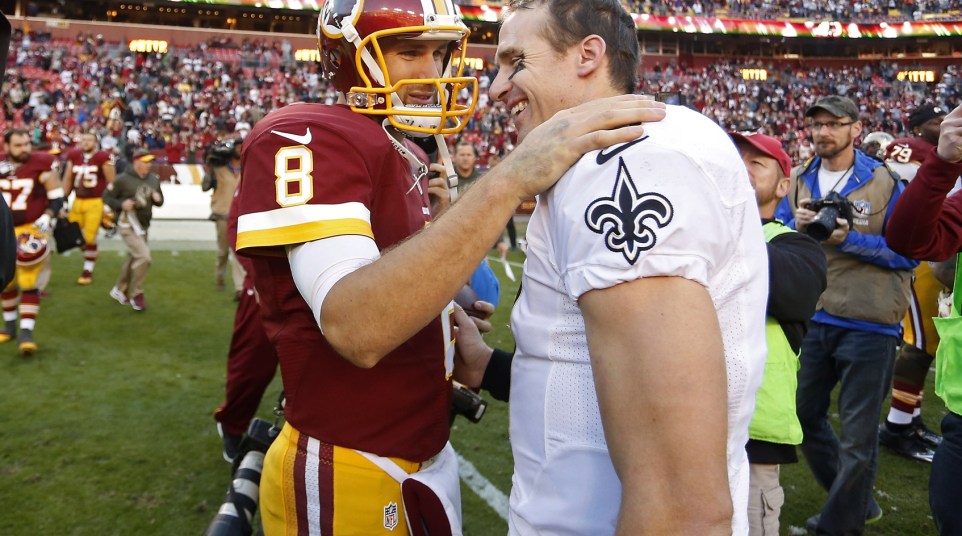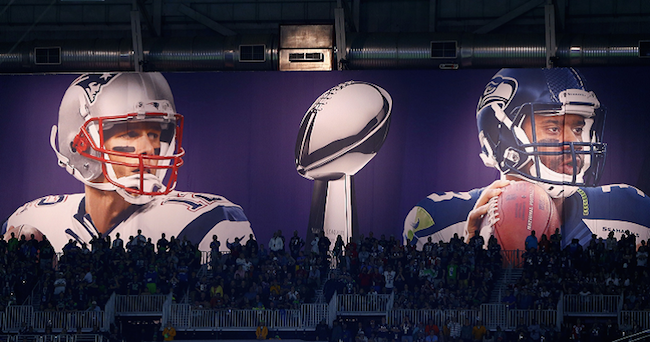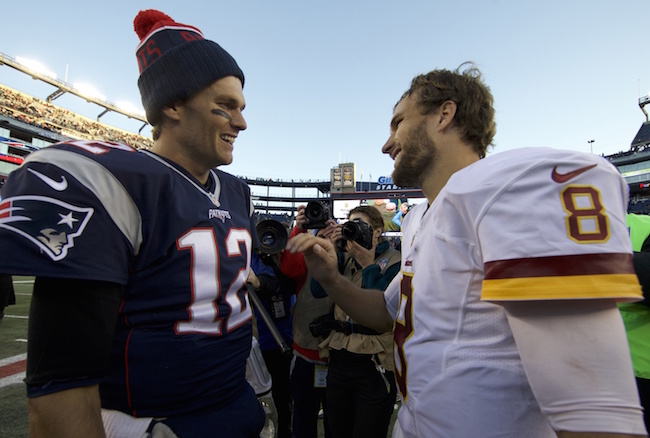The B1G's first-round QB drought will continue, but it shouldn't matter anymore
I made a not-so-bold prediction in the beginning of last season. That prediction is two-and-a-half months away from happening, but it looks like a lock.
Another year, another draft without a first-round B1G quarterback. A total of 53 quarterbacks were drafted in the first round from 1996-2016, none of which came from the B1G.
It’ll mark the 22nd straight time in which the first round of the NFL draft will conclude in such fashion. That means pretty much every player in this year’s draft wasn’t born when Penn State’s Kerry Collins was the No. 5 overall pick in 1995.
It’s a punchline that’s likely been used in living rooms across the country. It’s anti-B1G propaganda, and for the best quarterback recruits in the country, it might work.
But it shouldn’t.
It’s not like B1G quarterbacks are flops in the NFL. Tom Brady just cemented his status as the greatest quarterback of all-time. Drew Brees is closing in on all-time records and an inevitable first-ballot Pro Football Hall of Fame induction. Russell Wilson is the NFL’s poster-child and Kirk Cousins could make upwards of $25 million next season.
So where’s the punchline there? If pitching a stat about a conference’s first-round quarterback drought is the strategy, there’s a pretty easy rebuttal.
Including Trevor Siemian, the B1G has five of the league’s 32 starting quarterbacks. Brees was the only one who finished the season with a record below .500. Their five respective teams had a combined regular season record of 48-30-2.
What does that stat matter for? Well, B1G quarterbacks are rarely ever drafted to be “the guy.” They go into situations where they aren’t expected to save the franchise like a Jared Goff or a Jameis Winston. They have pieces around them. With the exception of Brees, all of the current B1G starting quarterbacks in the NFL are playing — and winning — for the teams that drafted them.
Who knows? Maybe 2017 produces another case like that.
The B1G might wind up with three quarterbacks drafted between C.J. Beathard, Wes Lunt and Mitch Leidner (“might” is the key word). Barring a miracle, they’ll all be Day-3 picks. None of them will be expected to be “the guy,” yet they could all get an opportunity. Brady and Siemian were sixth- and seventh-round picks, respectively, and both earned starting gigs in their second seasons.
RELATED: Todd McShay: C.J. Beathard could be late-round gem of this year’s draft
Obviously there are no guarantees for highly-touted quarterbacks. Johnny Manziel went from a first-round pick to unemployed after two seasons. But hey, make sure the SEC gets credit for producing a first-round quarterback. It won’t, however, get a first-round credit for Dak Prescott.
Speaking of the SEC, the conference was responsible for 11 first-round quarterbacks from 1996-2016. Some of which were stars (Manning brothers, Cam Newton) and some of which were busts (Manziel, JaMarcus Russell).
But take a closer look at the side-by-side comparison, and you’ll realize that the SEC hasn’t necessarily produced more successful NFL quarterbacks than the B1G:
| QUARTERBACKS DRAFTED FROM 1996-2016 | SEC | B1G |
|---|---|---|
| First-round QBs | 11 | 0 |
| All-Pro seasons (first- or second-team) | 11 | 8 |
| Super Bowl appearances | 8 | 10 |
| Super Bowl victories | 4 | 7 |
Those last three categories are what separates the good and elite quarterbacks. (For what it’s worth, I wanted to include Pro Bowl appearances, and then I remembered that Siemian made it this year and I realized that probably shouldn’t count.)
The SEC actually had less first-round quarterbacks than the Pac-10/Pac-12 from 1996-2016. So how does that comparison stack up for the B1G?
Well…
| QUARTERBACKS DRAFTED FROM 1996-2016 | PAC-10/PAC-12 | B1G |
|---|---|---|
| First-round QBs | 13 | 0 |
| All-Pro seasons (first- or second-team) | 5 | 8 |
| Super Bowl appearances | 2 | 10 |
| Super Bowl victories | 1 | 7 |
And in case you’re wondering, the B1G’s numbers aren’t only the product of Brady. Believe it or not, Brees actually has just as many All-Pro seasons as Brady (4). Including Wilson, the B1G had three different quarterbacks win Super Bowls — the SEC also had three — compared to just one (Aaron Rodgers) for the Pac-10/Pac-12.
If this doesn’t drive the point home, I don’t know what will:
| QUARTERBACKS DRAFTED FROM 1996-2016 | ACC | BIG 12 | B1G |
|---|---|---|---|
| First-round QBs | 5 | 7 | 0 |
| All-Pro seasons (first- or second-team) | 1 | 0 | 8 |
| Super Bowl appearances | 2 | 0 | 10 |
| Super Bowl victories | 0 | 0 | 7 |
Any Big 12 assistant claiming that the conference is “quarterback friendly” will probably leave out the fact that of all the Big 12 quarterbacks drafted in the last 20 years, none of them accounted for ONE All-Pro season. And the ACC has Matt Ryan’s 2016 outburst to thank for also not having a goose egg in that department.
To recap, all of the current Power Five conferences had at least five first-round quarterbacks drafted from 1996-2006. Well, except the B1G. The ACC, Big 12 and Pac-10/Pac-12 accounted for 25 first-round quarterbacks in the stretch, yet they have fewer All-Pro seasons, Super Bowl appearances and Super Bowl victories than the B1G COMBINED.
Take away Brady and then it’s a fair fight.
The recruiting sell is that first-round quarterbacks get paid. Under the new collective bargaining agreement, first-round quarterbacks aren’t compensated nearly as well. Sam Bradford signed for six years, $78 million as the No. 1 overall pick in 2009 compared to four years, $23 million for Winston as the No. 1 overall pick in 2015.
If you’re really going to make money as a quarterback in this era, it’ll come on that second or third contract.
Here’s what the B1G’s starting NFL quarterbacks — again, not first-round quarterbacks — made in 2016:
- Brees — $24,250,000
- Wilson — $21,900,000
- Brady — $20,500,000
- Cousins — $19,953,000
- Siemian — $525,000
With the exception of Siemian, who is still on a rookie contract as a seventh-round pick, all of those veteran signal-callers will make at least $20 million in 2017.
So if the money argument is being pitched by other conferences, it’s not a good one, either.
The reality is, the B1G first-round quarterback drought stat will surface again in the next few months. Some will try and break down why the drought has lasted so long — I did that last year — but given the success of non-first round B1G quarterbacks, it shouldn’t really matter anymore.
Who cares if the American Conference produced two first-round quarterbacks in one year alone? It doesn’t matter that the likes of North Dakota State and Delaware produced first-round quarterbacks during the B1G’s drought. And no, a quarterback won’t go to UCF instead of a B1G school because it produced two first-round quarterbacks the last 20 years.
It’s a punchline. But if you ask me, it lacks a little punch these days.


